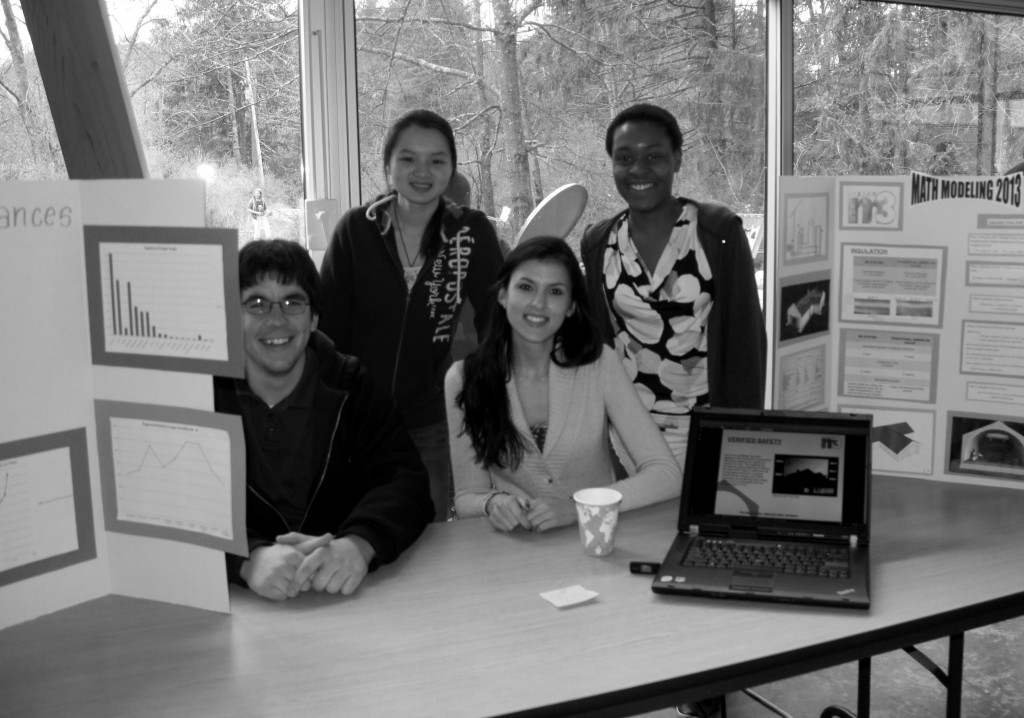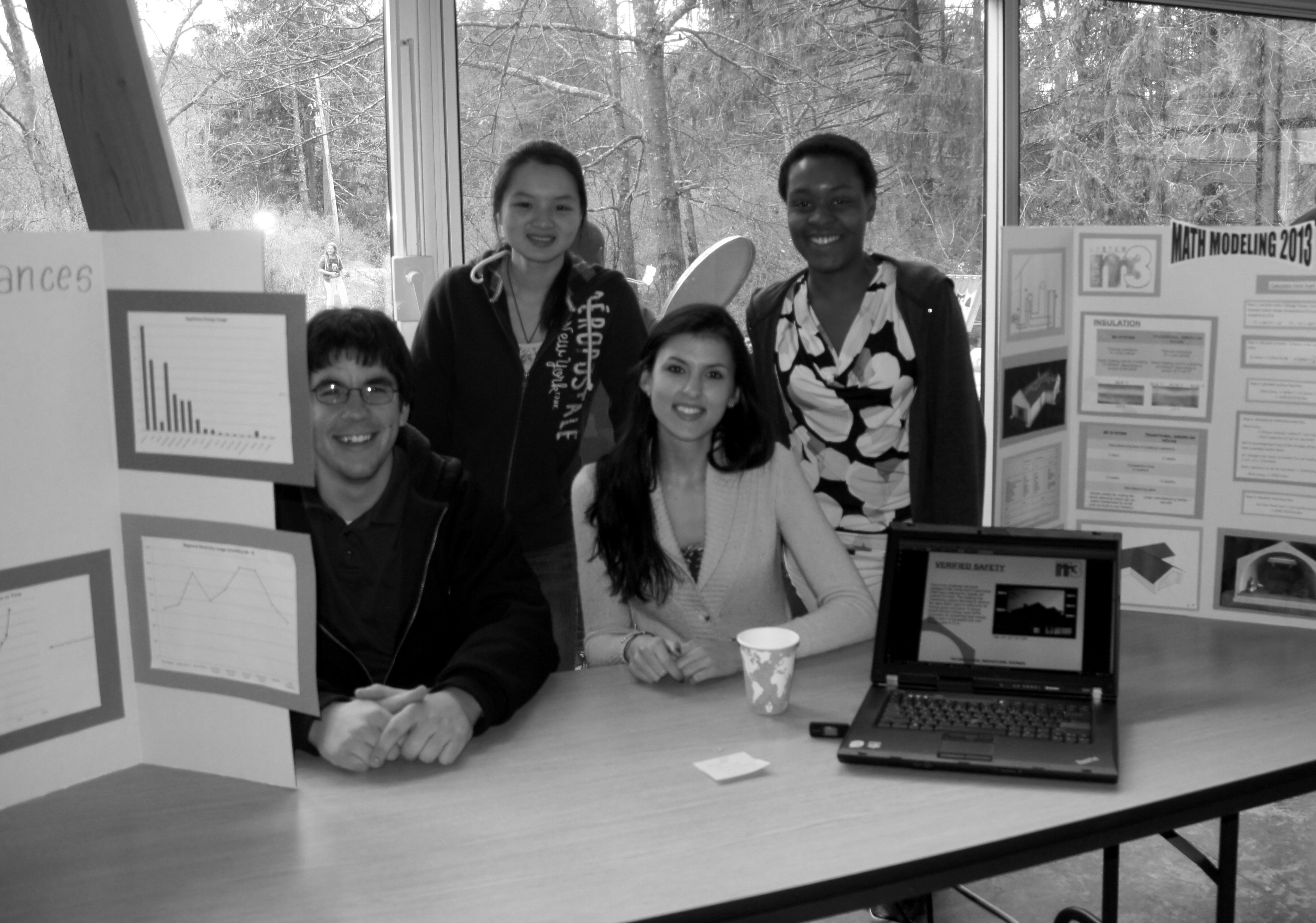

Photo Courtesy of Dr. Olivia Carducci
BY SCOTT BRADLEY
For The Stroud Courier
Dr. Olivia Carducci, a member of the department of mathematics at East Stroudsburg University, has been guiding her students in Introduction to Mathematical Modeling (Math 425) over the past few years to discover the real-world linkage between mathematics and sustainability.
Their projects have ranged from comparative studies for the alternative energy industry, effectiveness-mapping of light weight insulating materials used in construction, to carbon-footprint research studies (to name just a few).
The modeling used in each of these events has been effectively conceived, powerfully developed, professionally delivered, and well received. And as a result it has helped to define the path of sustainable processes in each of these fields.
Introduction to Mathematical Modeling begins anew each spring, as a capstone course within the mathematics curriculum. In 2008, when the university established its Sustainability Commission, ESU began to fold sustainability into each curriculum; Math 425 was among the early adopters of this practice.
Since then it has promoted student research and established poster and project demonstrations on and off campus, some of which have become part of ongoing professional and educational presentations. Often established as service-learning projects, this work has proven the effectiveness of modeling to develop and proof sustainable processes that will help take us into the future.
While each of these capstone projects has helped to anchor sustainable concepts in our culture, two of these are of significant interest to us here on campus.
The first, five years in the making, has focused on the campus’ carbon footprint. A ‘carbon footprint’ is the measure of the amount of carbon dioxide (the primary GHG-greenhouse gas) generated as one goes about his or her day. It’s a factor of everything you do and can be tracked to individual items: the lights in your room, your car, all aspects of the food you eat, the entertainment you enjoy, and the work you do.
Developed in conjunction with the ESU Sustainability Commission and ESU Facilities, this consultative process engaged Math 425 students who developed ESU’s carbon footprint report in order to see where ESU stood, and to define and manage potential reductions in our emissions.
The initial carbon footprint model accurately established the impact of non-commuter factors found on campus and has given us a marker of where we were and how we have improved over time. Following studies have looked at our commuter footprint and have laid out plans for how we might reduce this impact in the years ahead.
The math involved tracked types of vehicles, distances traveled, supplemental bus and delivery traffic, and more detailed projections for the achievability of reductions ranging from five percent to ten percent.
What’s next for Math 425? This semester they are looking into the potential offered by solar/thermal systems that might be used here on campus. The outcome of these models will assist the university in achieving carbon neutrality, and might change how we supply hot water across campus.
Preserving the environment is an important ESU goal, and Math 425 is helping to drive sustainability and the development of sustainable processes through Mathematic Modeling.
Email Scott at:
skb209@embarqmail.com

